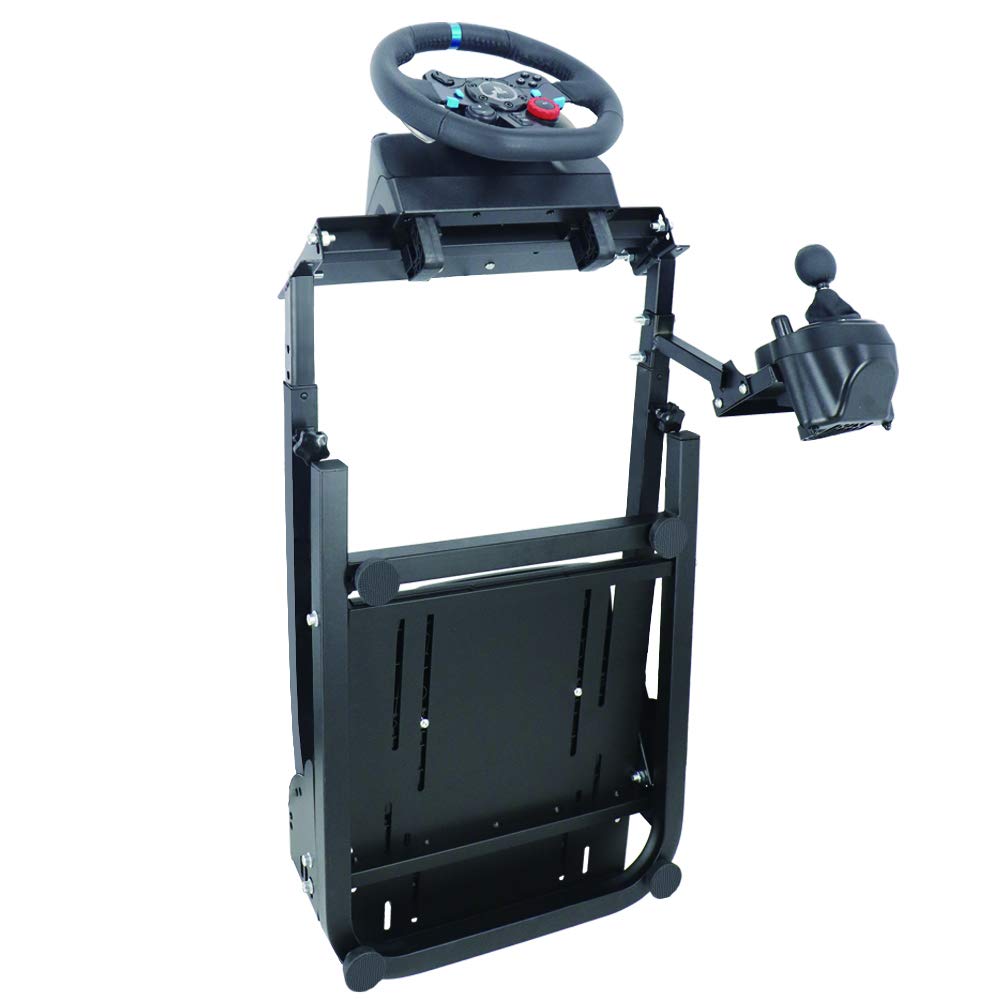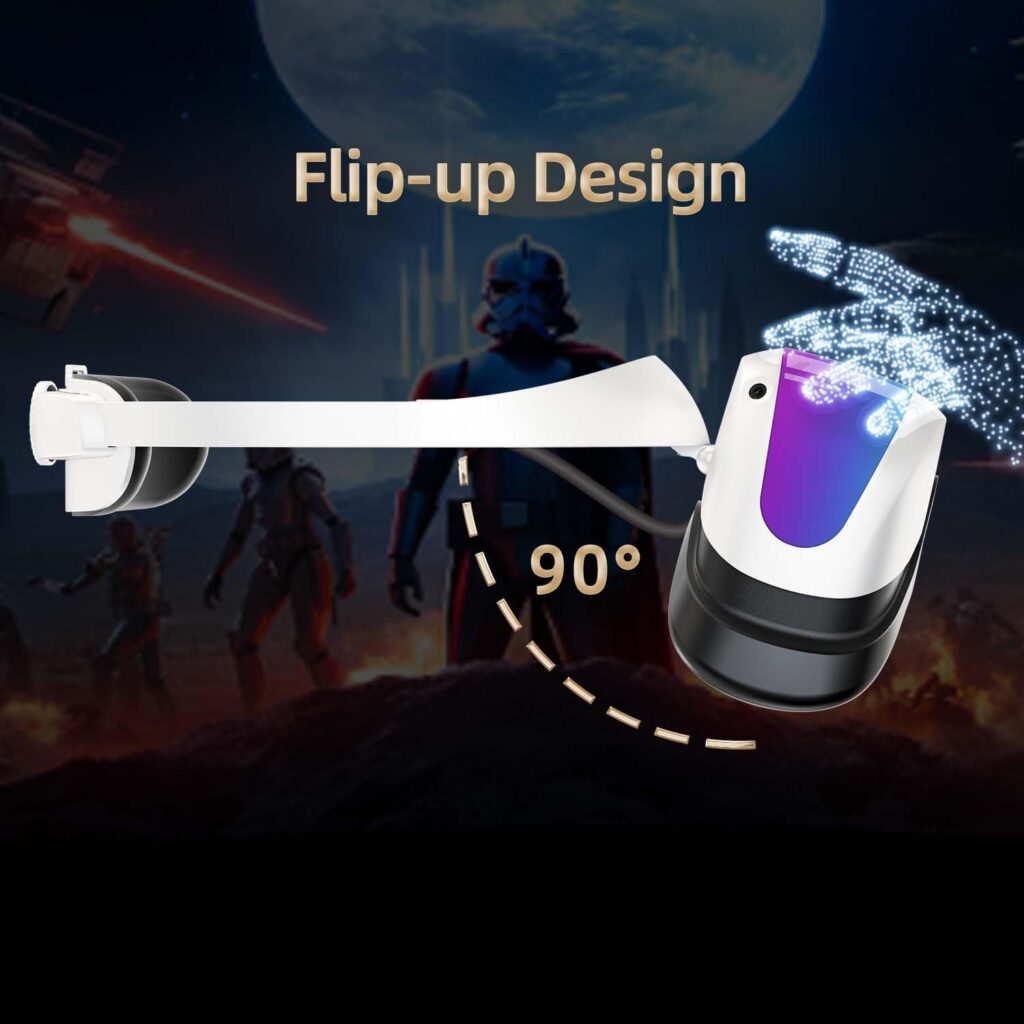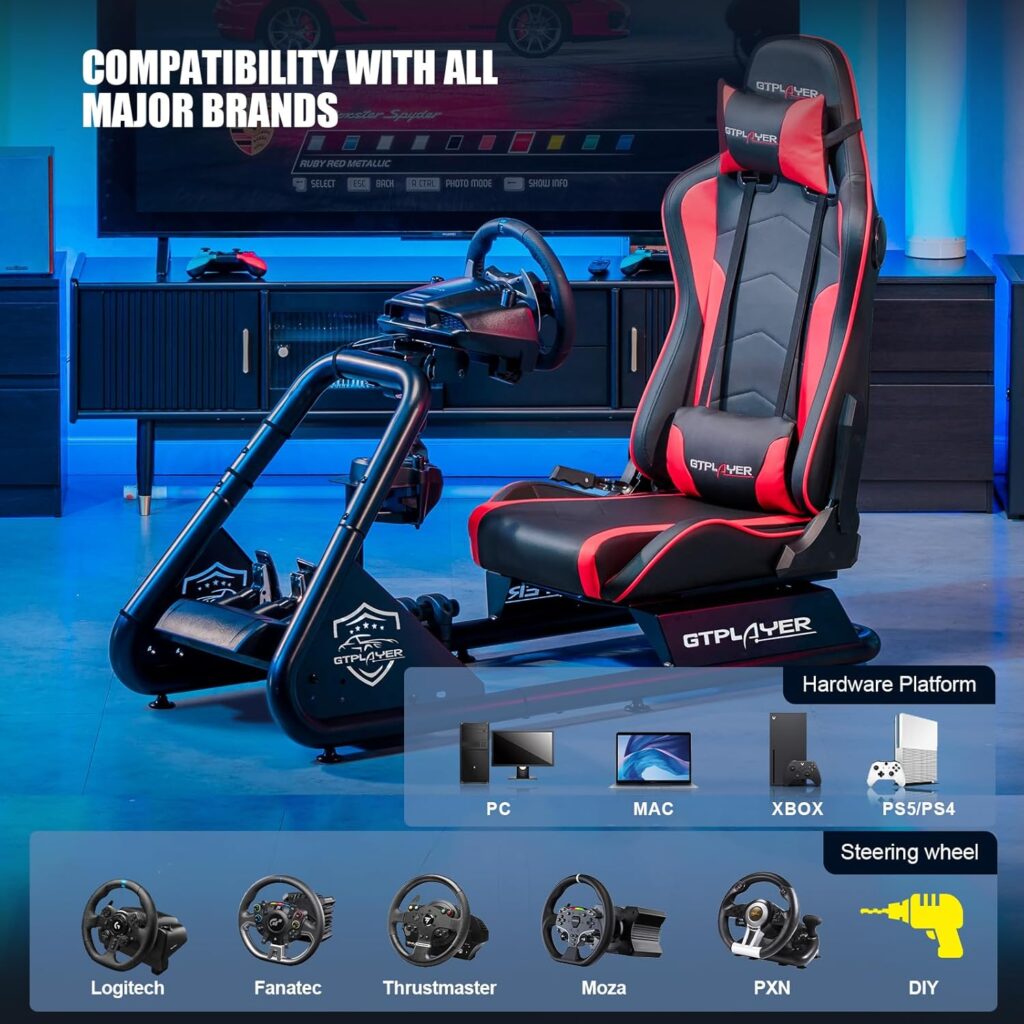In the exciting world of sim racing, there is no skill more crucial than mastering the art of braking. Whether you’re speeding around virtual tracks or competing against friends online, getting your braking technique just right can mean the difference between victory and defeat. So, if you’re looking to boost your performance and leave your opponents in the dust, it’s time to focus on perfecting your braking technique in sim racing. With a combination of precise timing, proper pedal control, and strategic braking points, you’ll have the edge you need to dominate the virtual race track.

Proper Brake Setup
Choosing the Right Brake System
When it comes to sim racing, having the right brake system is crucial for achieving optimal performance. There are various types of brake systems available, ranging from basic to advanced. To choose the right brake system for you, consider factors such as your skill level, budget, and personal preferences. Whether you opt for a load cell brake pedal or a potentiometer-based system, make sure it provides the responsiveness and accuracy you need to brake effectively in the virtual world.
Adjusting Brake Balance
Once you have chosen the right brake system, it is important to ensure that the brake balance is properly adjusted. Brake balance refers to the distribution of braking force between the front and rear wheels of your simulated vehicle. This balance affects the stability and control of the car during braking maneuvers. Adjusting the brake bias allows you to fine-tune the balance based on your driving style and the characteristics of the track. Experiment with different settings until you find the optimal brake balance for each specific scenario.
Calibrating Pedals
To ensure accurate and consistent braking, it is crucial to calibrate your pedals properly. Calibration involves setting the range and sensitivity of the brake pedal to match your desired input. By calibrating your pedals, you can eliminate any potential deadzones or inconsistencies in the brake signal. Take the time to carefully follow the instructions provided by the manufacturer of your sim racing equipment to calibrate your brake pedal effectively. This will help you achieve precise and reliable braking performance throughout your virtual racing sessions.
Understanding Braking Points
Identifying Braking Zones
To master the art of braking, one must learn to identify braking zones on the track. Braking zones are specific areas on the track where a driver needs to begin reducing speed for a corner or hairpin turn. These zones are typically characterized by visual cues, such as brake marker boards or track features. Pay attention to these cues and familiarize yourself with the track layout to accurately identify the braking zones. The ability to recognize and anticipate these points will allow you to approach corners with the right speed and execute smooth braking maneuvers.
Analyzing Track Conditions
Another crucial aspect of understanding braking points is analyzing the track conditions. Factors such as track temperature, grip levels, and tire wear can significantly affect the braking points. A track with lower grip levels may require an earlier braking point to ensure maximum control and prevent locking up the tires. Additionally, changes in weather conditions, such as rain or strong winds, can greatly impact the braking characteristics of the track. Continuously monitor the track conditions and adjust your braking points accordingly to maintain optimal performance throughout your races.
Timing Braking Points
Timing is everything when it comes to braking points. To achieve optimal performance, it is essential to time your braking maneuvers accurately. The goal is to begin braking at the right moment to carry maximum speed through the corner while maintaining control of the vehicle. Practice and experience are key to developing a sense of timing in this regard. Start by focusing on consistent braking points and gradually experiment with different techniques to find the perfect timing for each turn. With practice, you will develop muscle memory and intuition for the ideal braking points on any given track.
Trail Braking Techniques
Applying Partial Brake Pressure
Trail braking is a technique where the driver applies partial brake pressure while entering a corner. By maintaining some brake pressure deep into the turn, the weight transfer shifts towards the front of the car, increasing front tire grip. This technique allows for better control and stability when navigating through tight corners. Start by gradually applying light brake pressure as you initiate the turn, and then release it smoothly as you exit the corner. Remember to practice and fine-tune this technique to find the right balance and maximize its effectiveness.
Maintaining Balance and Control
While trail braking, it is crucial to maintain balance and control of the car. The key is to modulate the brake pressure and steering inputs delicately throughout the corner. Avoid abrupt movements that can upset the balance of the vehicle and cause loss of control. Practice smooth and gradual inputs to keep the car stable and responsive. Remember to pay attention to your virtual car’s feedback and adjust your inputs accordingly to maintain the ideal balance while trail braking.
Modulating Brake Pressure
The ability to modulate brake pressure is of utmost importance when employing trail braking techniques. To achieve optimal results, you need to progressively vary the brake pressure as you transition from initial braking to trail braking. Begin with firm initial brake pressure to slow down the car, and then smoothly taper off while entering the corner. This gradual modulation ensures a smooth transfer of weight to the front tires and maintains a balanced feel throughout the turn. Mastering the art of modulating brake pressure will enable you to navigate corners with precision and confidence.
Threshold Braking Techniques
Applying Maximum Brake Pressure
Threshold braking involves applying maximum brake pressure to slow down the car just before the tires start to lock up. This technique allows you to extract the maximum performance from your brakes while maintaining control. To execute threshold braking, press the brake pedal with increasing pressure until you feel the tires are on the verge of locking up. Be sure to release the brake pressure slightly to avoid tire lockup, as this can result in instability and longer braking distances. With practice, you will develop the feel and timing needed to apply maximum brake pressure effectively.
Balancing Weight Distribution
Maintaining proper weight distribution during threshold braking is crucial for optimal performance. As you brake, the weight of the car shifts towards the front, increasing grip on the front tires. This increased grip allows for better steering responsiveness and control. However, excessive weight transfer to the front can cause the rear tires to lose grip, leading to oversteer. To achieve the ideal balance, always be conscious of your inputs and make slight adjustments to steer the car smoothly through corners while effectively slowing down.
Avoiding Braking Lockups
One of the main challenges of threshold braking is avoiding braking lockups. Locking up the brakes occurs when the wheel rotation is completely halted due to excessive brake pressure. This not only compromises your ability to steer but also results in longer braking distances. To avoid lockups, be mindful of your brake pressure and release it slightly whenever you feel the tires are about to lose grip. Practice and finesse are key to developing the necessary sensitivity and timing to prevent lockups during threshold braking.

Heel-and-Toe Downshifting
Coordinating Braking and Downshifting
Heel-and-toe downshifting is a technique used to smoothly transition from a higher gear to a lower gear while braking. This advanced technique allows you to maintain stability and control of the car while entering corners. To execute heel-and-toe downshifting, you need to brake with the ball of your foot on the brake pedal while blipping the throttle with the side of your foot to match the engine speed with the lower gear. Coordinating the timing and movement of your foot between braking and throttle blipping is key to mastering this technique.
Rev-Matching Technique
Rev-matching is an integral part of heel-and-toe downshifting. It involves matching the engine speed to the rotational speed of the lower gear during the downshift. By blipping the throttle, you increase the engine RPM to smooth out the transition and prevent unsettling the car. The goal is to have a seamless downshift that maintains stability and avoids any jerking or tugging of the vehicle. Practice rev-matching by focusing on a fluid and precise throttle blip while downshifting, gradually honing your coordination and timing.
Smoothly Transitioning Gears
Smooth transitioning of gears is essential for effective heel-and-toe downshifting. As you approach a corner and begin braking, shift your focus to the clutch and gearshift. With your heel on the brake pedal, roll your foot to the side to blip the throttle while using your other foot to engage the clutch and shift down a gear. Aim for fluid and precise footwork, minimizing any sudden or jerky movements. With practice, you will be able to seamlessly and effortlessly transition through gears, achieving optimal stability and control while maintaining speed.
Advanced Braking Techniques
Left Foot Braking
Left foot braking is an advanced technique employed by professional sim racers to reduce the time spent transitioning between the accelerator and brake pedals. This technique involves using your left foot to brake while your right foot remains on the accelerator. Left foot braking allows for instantaneous application of the brakes in situations that require quick reactions, such as rapid direction changes or maintaining stability during high-speed turns. Practice left foot braking gradually to ensure smooth and accurate pedal inputs, and be mindful of the potential for pedal overlap to avoid unintended inputs.
Brake Bias Adjustment
Brake bias adjustment involves altering the distribution of braking force between the front and rear wheels of the car. This technique is particularly useful for fine-tuning the handling characteristics of the vehicle in different driving conditions. By adjusting the brake bias, you can optimize the grip and stability of the car during braking. For example, increasing the bias towards the front can enhance turning performance, while shifting it towards the rear can improve stability under braking. Experiment with different brake bias setups to find the ideal balance for your specific driving style and track conditions.
Hamilton Braking Method
The Hamilton braking method is a technique named after the renowned Formula One driver, Lewis Hamilton. It involves a two-step process of braking, focusing on maximizing initial braking force followed by a smooth, progressive release as the car enters the corner. The idea is to brake with maximum intensity during the initial phase to rapidly decelerate the car while maintaining complete control. As the turn progresses, gradually release the brake pressure to carry speed through the corner. The Hamilton braking method requires practice and timing to execute effectively and can greatly enhance your cornering performance.
Optimizing Braking Distance
Analyzing Track Layout
To optimize your braking distance, it is essential to analyze the track layout and understand its characteristics. Different tracks have varying corner types, lengths, and widths, all of which significantly impact the required braking distances. Take the time to study the track, paying attention to the severity of the corners, the length of the straights, and any elevation changes. This analysis will help you anticipate braking points and adjust your approach to each turn, allowing for smoother and more efficient braking.
Considering Weather Conditions
Weather conditions play a crucial role in determining the optimal braking distances. Factors such as temperature, humidity, and track grip levels are greatly influenced by the weather. Wet or cold tracks generally have lower grip levels, requiring longer braking distances to prevent sliding or locking up the tires. On the other hand, dry and warm conditions provide higher grip, allowing for shorter braking distances. Stay aware of the weather conditions and adjust your braking points accordingly to optimize your performance throughout the race.
Fine-Tuning Braking Points
Fine-tuning your braking points is essential for optimizing braking distance. Start by establishing a baseline for each corner in practice sessions, and then gradually experiment with different approaches to find the most efficient braking points. Avoid late or early braking, as both can compromise your speed and stability through the turns. Strive to consistently hit your braking points while maintaining control and minimizing braking distances. Continuously evaluate and refine your technique to find the perfect balance between speed and control on each track.
Braking Techniques for Different Vehicle Types
Sports Cars
Sports cars have unique braking characteristics due to their high performance and aerodynamic designs. Braking techniques for sports cars tend to focus on maximizing the available grip while maintaining stability during high-speed maneuvers. Trail braking and threshold braking techniques are particularly effective for sports cars. Experiment with different techniques and brake setups to find the optimal balance of control and performance specific to your sports car.
Open-Wheel Cars
The open-wheel cars commonly found in Formula racing require precise and consistent braking techniques. Due to their lightweight and nimble nature, open-wheel cars demand careful modulation of brake pressure to prevent wheel lockups and maintain optimal control. Smooth transitions between braking and turning are essential to avoid unsettling the car and potentially causing spins or crashes. Practice smooth and progressive brake applications to get the most out of open-wheel cars on the track.
Off-Road Vehicles
Off-road vehicles, such as rally cars or trucks, require specialized braking techniques that cater to the unique challenges presented by rough and unpaved terrains. Braking in off-road scenarios often involves managing wheel lockups and traction loss. Techniques like threshold braking and left-foot braking can be valuable when dealing with loose surfaces and unpredictable grip levels. Adapt your braking technique to the specific characteristics and demands of off-road racing to achieve optimal control and performance.
Simulator Settings for Braking
Adjusting Brake Sensitivity
Simulator settings allow you to fine-tune the sensitivity of your brake pedal to match your preference and driving style. Adjusting brake sensitivity can help you achieve more precise and accurate braking inputs, allowing for better control and modulation. Experiment with different sensitivity settings to find the one that feels most comfortable and responsive to you. Remember to take into account the specific characteristics of your brake system and the software or simulator you are using, as these factors can also affect the overall feel and responsiveness of the brakes.
Mapping Brake Pedal
Mapping the brake pedal is an essential step in sim racing setup. Properly mapping the brake pedal ensures that the software accurately translates your physical pedal inputs into the virtual world. Follow the instructions provided by your simulator or software to map the brake pedal correctly. Be sure to test the mapped pedal thoroughly to ensure that the desired range of motion and sensitivity is accurately reflected in the virtual environment. Proper mapping guarantees a consistent and reliable brake feel throughout your races.
Fine-Tuning Deadzones
Deadzones refer to areas of little to no sensitivity in the brake pedal. Fine-tuning these deadzones is crucial to achieving optimal brake performance. Excessive deadzones can result in delayed or erratic brake responses, compromising your control and precision. Use the software or simulator settings to adjust the deadzone parameters, minimizing them to ensure that even the slightest brake input is recognized. Continuously test and adjust the deadzones to maintain a responsive and accurate brake pedal feel, giving you the edge you need in competitive sim racing.
Understand and Minimize Brake Fade
Maintaining Optimal Brake Temperatures
Brake fade occurs when the braking system becomes less effective due to overheating. To minimize brake fade, it is essential to maintain optimal brake temperatures. Proper cooling techniques can help dissipate heat and prevent a decline in braking performance. Utilize features like brake ducts or cooling fans to enhance airflow and reduce the risk of overheating. Additionally, paying attention to your driving style and avoiding excessive or prolonged brake usage can also help preserve optimal brake temperatures and minimize fade.
Choosing the Right Brake Pads
The choice of brake pads significantly influences brake fade and performance. Different brake pad compounds have varying characteristics, such as heat resistance and friction levels. Performance-oriented brake pads are often designed to withstand higher temperatures and provide consistent braking performance under extreme conditions. Consider your specific track conditions, driving style, and the demands of your simulated car when selecting brake pads. Consulting with experts or experienced sim racers can provide invaluable insights into the best brake pad options for your racing needs.
Avoiding Excessive Brake Usage
Excessive brake usage can lead to brake fade and compromised performance. Overly aggressive braking or prolonged braking can cause excessive heat buildup, resulting in a decline in braking efficiency. Strive for smooth and controlled braking, maximizing your use of trail braking and threshold braking techniques to reduce unnecessary stress on the brakes. Focus on maintaining a proper balance between speed and control to avoid excessive brake usage and preserve the optimal performance of your braking system.
Perfecting your braking technique in sim racing is a continuous process of learning, practice, and refinement. By understanding the intricacies of braking points, mastering trail and threshold braking techniques, honing your heel-and-toe downshifting skills, and exploring advanced braking techniques, you can enhance your performance on the virtual track. Additionally, optimizing braking distance, adapting techniques to different vehicle types, and fine-tuning simulator settings will enable you to extract the full potential of your braking system and elevate your sim racing experience to new heights. Remember to approach each session with patience, dedication, and a willingness to learn, and soon you will find yourself reaching the apex of your braking prowess.




